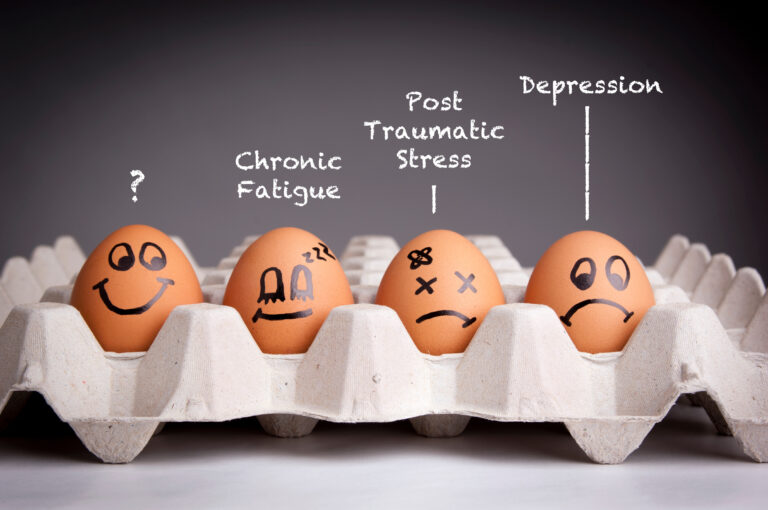
You’ve achieved significant milestones—whether a successful career, raising a family, or building a comfortable lifestyle—but lately, those accomplishments aren’t sparking the same sense of purpose and fulfilment. What once motivated you might now feel routine or unfulfilling, and you’re sensing a growing desire for something more profound, more aligned with who you’ve become.
You’re not alone.
Many people reaching midlife find themselves at a crossroads, craving more significant meaning, renewed energy, and a more straightforward path forward.
The challenge is figuring out how to set goals and create an action plan when the next chapter is unclear.
Traditional goal-setting methods can feel uninspiring or overly clinical.
You want a fresh approach—something practical yet deeply resonant. You want a way to define goals that energise you and outline clear steps that actually excite you.
In this article, you’ll discover a powerful approach to goal setting and action planning that’s helping thousands of people like you confidently transition into their next meaningful chapter without overwhelm or uncertainty.
What Midlifers Need to Know About Creating a Life Plan – Goal Setting and Action Planning That Sticks
Having navigated my own significant career shift—moving from a demanding executive role in tech to coaching professionals through meaningful life transitions—I’ve seen first-hand the challenges and opportunities of redefining life goals at midlife. Over the years, I’ve guided hundreds of individuals through proven methods that don’t just set new goals but deeply connect them to personal values, purpose, and fulfilment.
Science backs this approach.
Studies from leading psychologists and neuroscientists highlight that traditional goal-setting strategies often fail because they neglect emotional drivers and deeper personal values.
Frameworks such as David Rock’s neuroscience-based models emphasise that practical goals must align closely with our brain’s natural response to change, addressing our fundamental needs for autonomy, certainty, and meaning.
Likewise, renowned goal-setting experts like Michael Hyatt stress the importance of choosing goals that genuinely excite you—goals that stretch your comfort zone just enough to fuel lasting motivation and growth.
Combining these insights with my direct experience coaching professionals to clarity and renewed purpose, I’ve developed a simplified, robust process for goal setting and action planning that consistently helps people create tangible, energising results.
Throughout this article, I’ll share these insights and practical strategies to help you clearly define what matters most, break through internal barriers, and build an action plan that truly transforms your life.

Your 4-Step Goal Setting and Action Planning Blueprint for Transforming Your Life
This isn’t about ticking boxes.
It’s about creating goals that actually mean something—that fire you up, fit your values, and provide a clear plan to navigate the messy middle.
Here’s how you can reframe their approach to setting goals and taking action without burning out or spinning their wheels.
Step 1: Anchor Your Goals in What Really Matters (Values-Driven Vision)
When goals are disconnected from values, motivation dries up. That’s why lasting change starts from within—not with a to-do list but with a truth list.
Traditional goal-setting skips this step.
But, research shows the most fulfilling and energising goals come from a deep connection to personal values—not obligations or external expectations.
To get clear, ask yourself:
- What are the moments in my past that made me feel most alive, most like me?
- What do I want more of in my life—not just achievements, but feelings?
These feelings often point to your Shadow Values®—the emotional needs driving your decisions under the surface. Maybe you think you want more time, but what you’re actually craving is freedom. Or perhaps you want to pivot careers, but what’s really at stake is your identity and desire to feel seen.
Try this:
- Identify your top 5 values and then ask: What feeling do each of these values give me?
- Use those feelings as your compass. Goals grounded in these will feel like fuel, not friction.
Bonus insight: Knowing your Shadow Values® and their hierarchy gives you the power to transform anything—because they override even survival instincts when tapped correctly.
Step 2: Set Emotionally Charged, Brain-Friendly Goals (Not Just SMART)
You’ve likely set SMART goals before—but what you need now are goals that stretch you just enough to feel thrilling, not clinical.
 Let’s upgrade the framework using Michael Hyatt’s SMARTER model and Mark Murphy’s HARD goals principles:
Let’s upgrade the framework using Michael Hyatt’s SMARTER model and Mark Murphy’s HARD goals principles:- Specific + Measurable + Time-bound → Yes, but also…
- Risky: It should feel like a leap, not a checkbox.
- Exciting: If the thought of it doesn’t light something up inside, it won’t survive long-term pressure.
- Relevant: Not to who you were, but who you’re becoming.
Also, your brain responds better to toward goals than away goals.
Saying, “I don’t want to feel burnt out anymore”, keeps you anchored to the past.
Flip it: “I’m building a consultancy that lets me work 3 days a week and pick my kids up from school.”
Try this:
- Reframe every goal using this format: I will [specific action] by [date], so I can [emotionally resonant outcome].
- Visualise the end state in detail: where are you? What does your day look like? What’s changed in your energy?
And remember, keep the number of goals small. The brain holds just 3–4 active goals well—anything more is white noise.
Step 3: Remove Resistance and Make It Stick (WOOP + SCARF + Top-Down)
This is where most goal-setting systems fall short: they ignore internal resistance.
Hard fact: No tactic will stick if you haven’t dealt with your subconscious roadblocks.
That’s where tools like WOOP and Top-Down Transformation come in.
Start with WOOP:
- Wish: What do I want?
- Outcome: What would it feel like to have it?
- Obstacle: What’s in me that might get in the way?
- Plan: If that shows up, then I’ll do this.
Pair that with Top-Down Transformation:
- Values first – If your goals conflict with your values (e.g., freedom vs. people-pleasing), you’ll stay stuck.
- Emotions next – Unprocessed fear, regret, anger? It leaks into your decisions.
- Then beliefs – Reframe limiting beliefs after you’ve dealt with emotional blocks.
This ensures you’re not trying to build new habits over old resistance.
Also, apply the SCARF model (David Rock): Your brain thrives when it feels secure. Goals that increase your sense of Autonomy, Certainty, Status, Relatedness, and Fairness will feel safe to pursue—and safety matters when you’re rebuilding at midlife.
Try this:
- Use WOOP to plan your response to known obstacles.
- Ask: “Which SCARF triggers are being activated by this change?”
- Notice where internal resistance comes from—then work through it in that Top-Down order.
Step 4: Convert Vision into Momentum (GROW Model + Support)
It’s time to act once the vision is clear and resistance is low.
The GROW coaching model helps turn ideas into action:
- Goal: What’s the big picture?
- Reality: Where are you starting from?
- Options: What are all the ways forward?
- Will: What are you committed to doing this week?
It’s deceptively simple but highly effective—especially when revisited regularly.
Finally, add accountability:
- Don’t rely on willpower alone. That fades.
- Join a community, hire a coach, or partner with someone on the same path.
Try this:
- Review your GROW structure monthly: Is your action plan still aligned?
- Set weekly intentions that match your energy and capacity.
- Surround yourself with people who support your reinvention—not question it.
Small, consistent actions are better than huge, unsustainable bursts. Build momentum that honours your nervous system, not just your calendar.
What Life Looks Like When It All Clicks
You know that feeling when things just work? Not because they’re easy—but because they feel like you?
That’s what this approach to goal setting and action planning creates.
- You’re no longer chasing generic success—you’re living what matters.
- Your goals reflect your values, energy, and priorities—not someone else’s.
- You feel clear, calm, and quietly confident—even when the path is new.
- You have time for what matters: relationships, health, purpose, and peace.
- And most of all—you’re in motion again, not just thinking about it.
Free Live Training: Rewire Your Mindset – 4 Steps to Peak Performance
If this resonates with you, come join me for a free 90-minute live training session: Rewire Your Mindset—4 Steps to Peak Performance.
This session explains the mindset shifts and goal-setting strategies that help midlifers create meaningful, lasting change in their careers and lives.
You’ll learn:
- Why most midlife goals fall flat—and how to change that
- How to remove internal resistance and get back your drive
- A simple 4-step process that creates absolute clarity and progress
Spots are limited. Reserve yours here now—this might be the spark you’ve been waiting for.
References
- AchieveIt, 2023. How to Achieve Business Goals Using HARD Goals & Soft Goals. [online] Available at: https://www.achieveit.com/resources/blog/hard-goals-vs-soft-goals-how-to-get-from-where-you-are-to-where-you-need-to-be-in-business/ [Accessed 11 Apr. 2025].
- Allegraconsulting.com.au, 2021. The SCARF Model – Applying the model to understand our reactions to change. [online] Available at: https://www.allegraconsulting.com.au/blog/scarf-model-applying-model-understand-our-reactions-change [Accessed 11 Apr. 2025].
- GetAbstract, 2023. Hard Goals: The Secret to Getting from Where You Are to Where You Want to Be by Mark Murphy. [online] Available at: https://www.getabstract.com/en/summary/hard-goals/15540 [Accessed 11 Apr. 2025].
- Hyatt, M., 2019. Your Best Year Ever: A 5-Step Plan for Achieving Your Most Important Goals. Baker Books.
- NeuroLeadership Institute, 2020. Your Brain on Goals. [online] Available at: https://neuroleadership.com/your-brain-at-work/brain-and-work-goals [Accessed 11 Apr. 2025].
- Oettingen, G., 2014. Rethinking Positive Thinking: Inside the New Science of Motivation. Current.
- Panorama Education, 2022. Introduce Students to Goal-Setting with the WOOP Method. [online] Available at: https://www.panoramaed.com/blog/setting-goals-woop [Accessed 11 Apr. 2025].
- Positive Psychology, 2021. The Philosophy of Ikigai: 3 Examples About Finding Purpose. [online] Available at: https://positivepsychology.com/ikigai/ [Accessed 11 Apr. 2025].
- Wikipedia, 2023. GROW model. [online] Available at: https://en.wikipedia.org/wiki/GROW_model [Accessed 11 Apr. 2025].
- Harvard Graduate School of Education, 2023. The Immunity to Change Approach. [online] Available at: https://www.gse.harvard.edu/hgse100/story/changing-better [Accessed 11 Apr. 2025].


